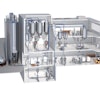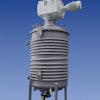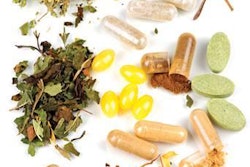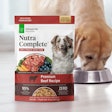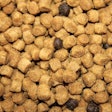
Nanotechnology is a new and emerging science that deserves our attention, not just out of curiosity but also out of our own self-interest. Nanotechnology is more than the science of small things; it is nearly as profound as the discovery of another previously unknown universe simultaneously inhabiting the same time and space that we do. How can nanoparticles do this? Because their size is 1/60,000th the diameter of a human hair.
Nanotechnology is defined as “the manipulation, precision placement, measurement, modeling or manufacture of sub-100 nanometer scale matter” (European Commission, 2001). At this dimension, the physical and biological properties of materials differ in fundamental and valuable ways from the properties of individual atoms and molecules of bulk matter, but what does this mean in practical terms?
Of immediate benefit to us is the fact that at the nanoparticle size, Newtonian physics—the physics that governs the behavior of particles in our everyday world—is often no longer valid. At the nanoparticle size, quantum physics dictates the behavior of particles, which no longer act as the sum of all the constituent atoms; because of the change in surface to mass ratio, individual atoms within the molecule or even a simple element begin to have much more influence. Therefore, common substances, whose behaviors may be very familiar to us (such as melting point, color, dissolving in only certain media), may behave very differently.
For example, oil-in-water emulsions are no longer cloudy but become clear transparent liquids, with no phase separation over time, and remain thermodynamically stable. A common application might be something like very insoluble oils such as vitamin E or flavor oils (such as orange oil), which normally require the addition of emulsifiers to the medium so they don’t just float at the top of the liquid. At the nanoscale, the material is dispersed throughout an aqueous medium when made as a nano-emulsion, even in acidic media such as soft drinks.
Nanoparticles, by their very nature, are very, very small—smaller than conventional particles used in animal feed and so small that they can overcome normal principles of absorption and distribution in the body. At the nanoparticle size, substances can simply pass through intestinal cells or even between cells, relatively unimpeded.
For example, with vitamin E, the manufacturer must add five times more than the daily requirement, because only one-fifth is absorbed in the mammalian intestine. The remaining four-fifths is excreted in the feces. If a substance such as vitamin E is reduced to nanoparticle size, the degree of absorption would be much higher (closer to 100%). With this high degree of availability, the manufacturer can save money by reducing the amount of vitamin E added to the finished product to only one-fifth of the original amount, giving the consumer the daily requirement at one-fifth the cost.
Also, at the nanoparticle size, normal barriers might be circumvented. For example, it is difficult to deliver drugs to the brain, thyroid or even the fetus because of the normal physiological barriers in place. At the nanoparticle dimension, substances may have easy access to these hitherto inaccessible places and deliver drugs or nutrients to the brain or even the fetus.
Certain caveats apply in all the examples listed above. Increased absorption rate and speed may not be beneficial; the fact that a substance is absorbed slowly or only to a limited amount is often a built-in safety mechanism. Slow absorption may be required to allow the body to accommodate even an essential nutrient and use the substance effectively. Rapid absorption may result in some body functions becoming overwhelmed and producing toxic effects.
For instance, there is a reason some drugs must be taken orally and often with foods to retard absorption, for fast absorption or an injection could result in toxic effects. Further, if it is so easy for a nanoparticle to be absorbed, how will it ever be excreted? Will our bodies become chemical dumps for nano-sized particles?
Circumventing normal physiological barriers is not always a good idea, either. The problem is that most drugs and nutrients (or for that matter, flavor ingredients or preservatives) have never been tested as nanoparticles and may have some very toxic effects in these previously protected areas. For example, drugs and food ingredients currently on the market have been tested and found not to cause birth defects, but when you allow this new form of the same substance to gain access to the fetus, who knows what will happen?
The US Food and Drug Administration is acutely aware of the fact that there is a low financial threshold for entry into nanotechnology and there may well be windfall economic advantages for any industry exploiting the potential advantages conferred with using it. The FDA is also aware that the safety of even previously approved substances has not been demonstrated for this new delivery matrix. FDA approval of nanotechnologically produced ingredients is on a case-by-case basis, and manufacturers are encouraged to talk to regulators.
